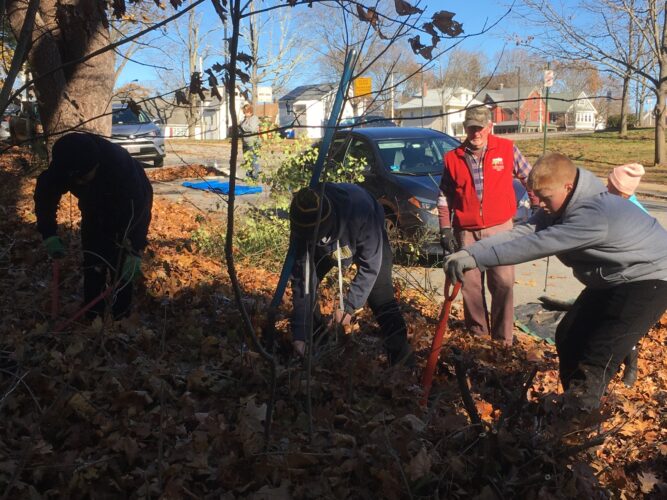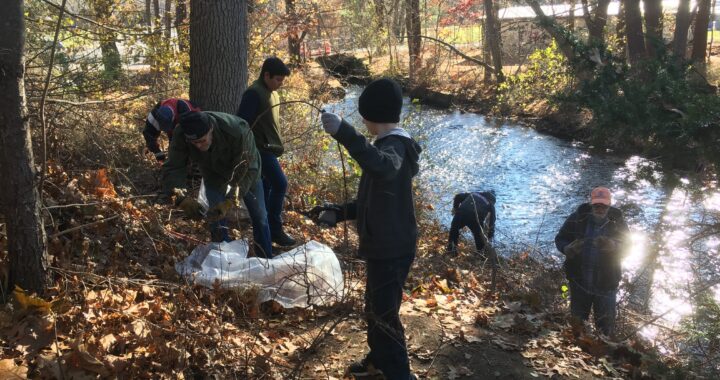Invasive species are organisms that are not native to an area, that tend to spread and displace native species, and that have harmful consequences for the environment. Invasive species include animals, plants, and even fungi. In the twentieth century, diseases caused by non-native fungi–accidentally introduced in North America–devastated elm and chestnut trees. Invasive gypsy moths have damaged many other local tree species.
Invasive trees and shrubs are common in our area and threaten to crowd out native plants–wreaking havoc with native ecosystems. The Attleboro Land Trust has launched an invasive removal project focusing on Larson Woodland. At four acres, this is one of our smaller nature preserves. This will serve as a demonstration project, and we hope to apply lessons learned to our other preserves.
A survey of the preserve was conducted by Gary Krofta and Phil Boucher, resulting in a map identifying the invasive species to be targeted and their locations. Longtime watershed protection advocate Don Doucette has been a key advisor. The project was kicked off on Saturday, November 23. Among the volunteers who pitched in was a contingent of Scouts from Attleboro Troop 15.

A good turnout of volunteers helped to remove invasive plant species at Larson Woodland on November 23, 2019. Image credit: C. Adler
Oriental bittersweet was removed from the banks of the Ten Mile River near the spillway. The bright red berries (once prized for their decorative value during the winter holidays) were bagged and will be burned to prevent propagation of new plants.

Oriental bittersweet (Celastrus orbiculatus) is an invasive vine that originated in China. Image credit: C. Adler
Some large non-native honeysuckle bushes along Riverbank Road were also removed.

Scouts from Troop 15 removing an invasive honeysuckle bush at Larson Woodland. Image credit: C. Adler
Project work parties will continue in the spring. Some of the other species to be targeted are buckthorn, purple loosestrife, and Norway maple. We welcome more volunteers to help with the work.

